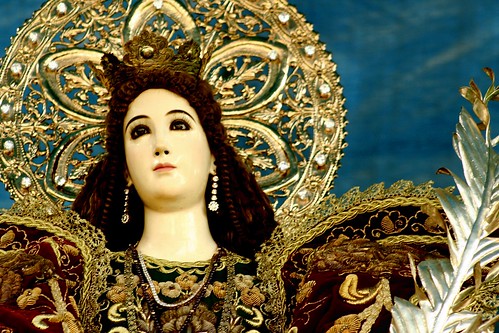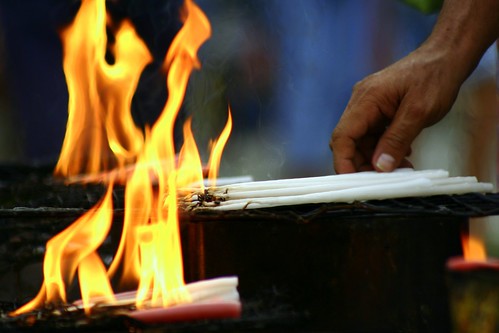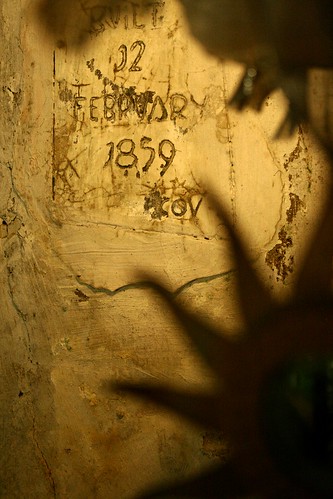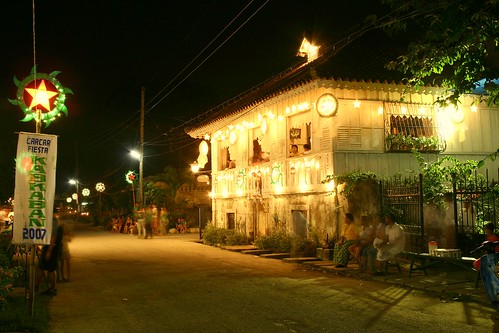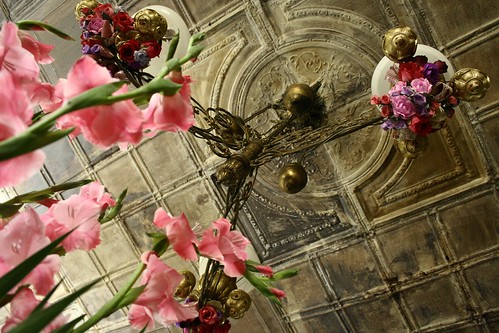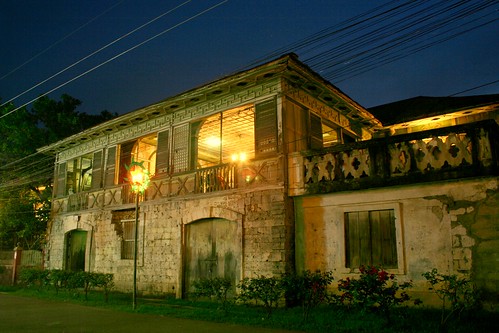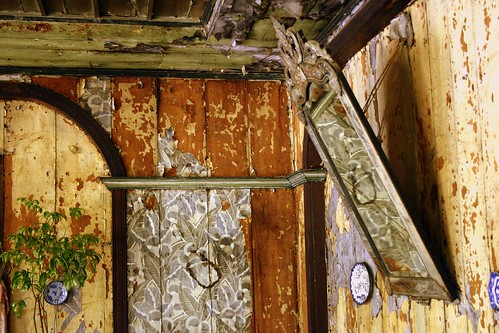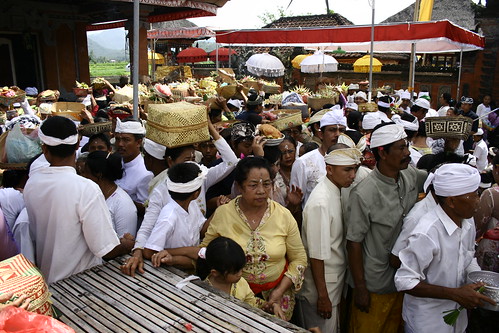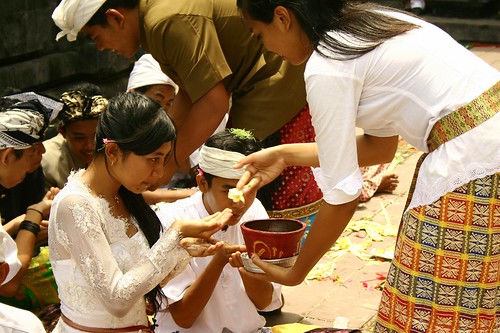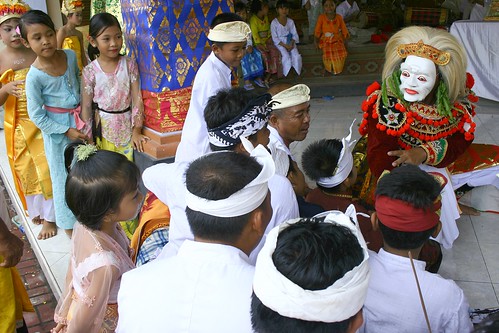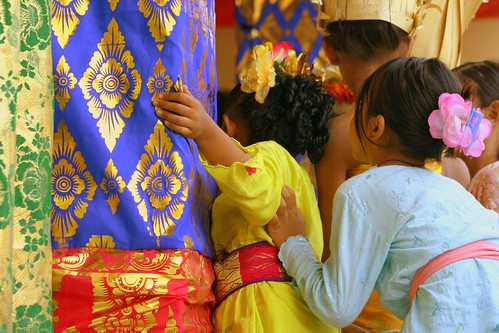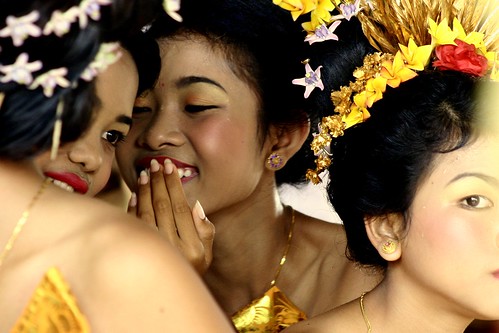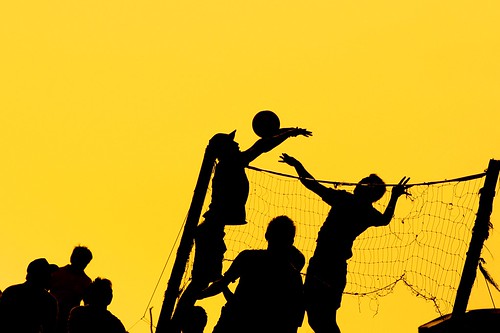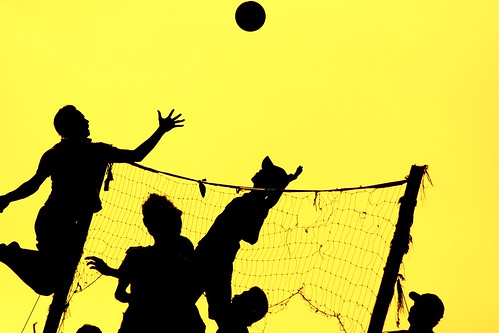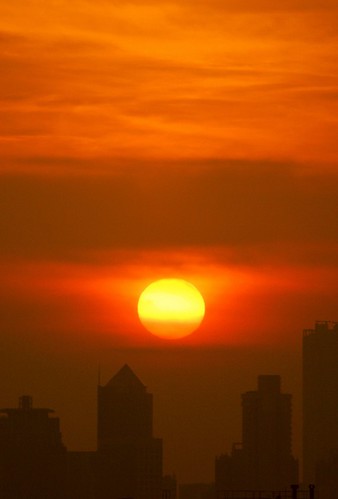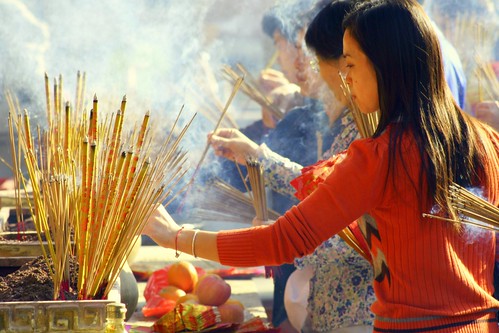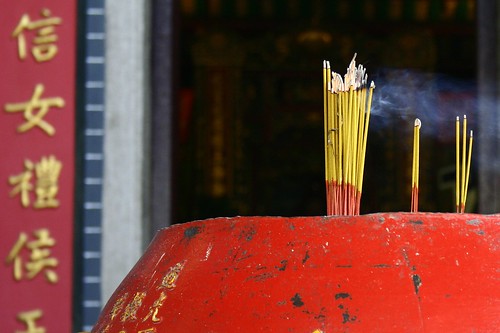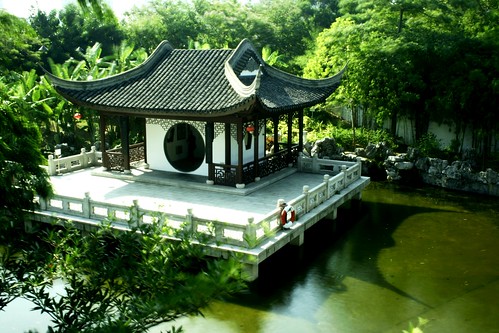Carcar’s Festival of Lights
continued from Stories and Photos of Carcar
For the second year in a row, the Carcar Heritage Conservation Society organized the unique Festival of Lights on November 25, 2007, the eve of the feastday of the city’s patron saint, St. Catherine of Alexandria. Headlining the celebration were more than 100 dancers from the homegrown St. Catherine College, wearing bright colorful Filipiniana costumes. The Festival was so much fun, especially for photography enthusiasts like me.
The Presentation of the Carrozas to the Church
The Festival started around 4:30PM when the four carros featuring tableaux of St. Catherine were brought to the Church. The dancers who lined up Sta Catalina Street performed a specially choreographed dance while the cortege passed by them. The choice of Sta Catalina Street was obvious. The thoroughfare was the it address during the Hispanic times, as it directly leads to the Church up on the hill. It still hosts most of the 19th century manors. Picturesque would be an appropriate description.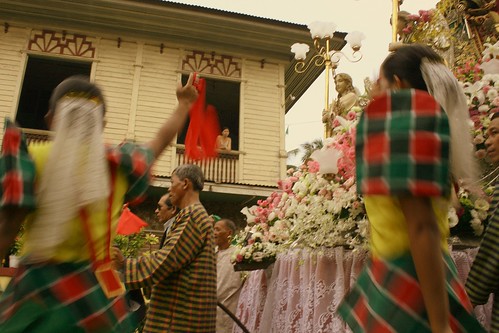
phototip: Filipinos generally love to be photographed. You can cut in and take photos in the middle of the road. Just don’t block the performers.
f/16, 0.05s, 18mm, ISO 400, +1/3EV, cropped
streetdancing around the carro being brought to the Church, Sta Catalina Street, Carcar City, Cebu, the Philippines
Once at the church grounds, the processional carrozas were blessed by the priest and the parishioners slowly assembled in preparation for the dusk procession. The procession started at about 6PM, when it was already dark, so the hundreds of followers had to use candles for illumination.
The Festival of Lights: Processional Passage
We could have waited at any point in Sta Catalina Street but we settled across the Balay na Tisa as our host Gibbster was asked by the family to document the festival there. Fortuitous I should say!
By 6:45PM, just when we could distinctly hear the rumbling of the brass band leading the procession, the dancers, who were already given hand torches and salakot or conical leaf hats fitted with a kerosene lamp, started to dance, illuminating the road with a drama of fluttering lights. A spectacle was unfolding.
phototip: Couple relatively long exposures with the 2nd curtain function for “frozen” moments. Movement lines shall still come out but the second flash freezes the action of the subject.
f/4, 0.8s, 21mm, ISO 800, slightly cropped
dancers with lanterns lining up the streets during the evening procession at the Street of Sta Catalina, Carcar City, Cebu, the Philippines
The people joining the procession was thick. I am not good in estimating crowds but let’s say it took about 10 minutes for the 4 carrozas and the people to pass by us, without interruption. All throughout the parade, the dancers swayed and danced in place at the side of the road. Being a solemn religious observance, the dance especially created by renowned choreographer Val San Diego who happens to be the president of the Carcar Heritage Conservation Society, was not jumpy but rhythmic, almost reverent.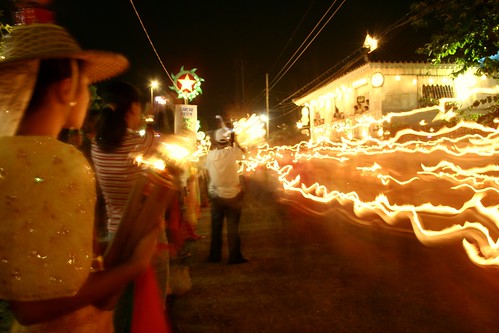
phototip: Have a sense of humor! Just when I finally found a good time to compose a long exposure shot of the candlelight procession, a videographer appeared and stayed in the middle of the road. There goes the shot.
f/6.3, 15s, 18mm, ISO 100, uncropped
the evening procession at the Street of Sta Catalina, Carcar City, Cebu, the Philippines
Sidelights
The celebration of lights moved with the carrozas so when the procession passed, the dancing eventually came to a halt. The dancers still remained in place though so the lull was perfect opportunity to capture photographic sidelights. Dancers, already in a giddy mood – tired, but never lacking of enthusiasm – were willing posers.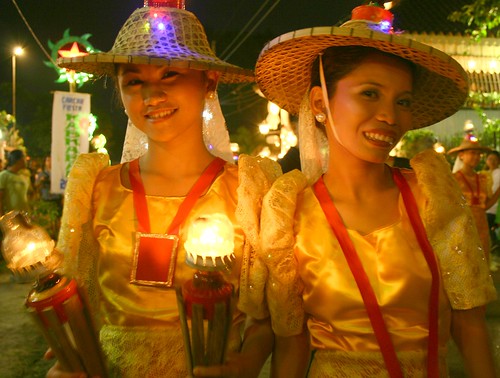
phototip: Flash photography can sometimes be too harsh on faces, especially in low light conditions. Instead, ask your subjects to keep still. This pair did that for me, for 2 seconds!
f/4.5, 2.0s, 27mm, ISO 200, slightly cropped
at the Street of Sta Catalina, Carcar City, Cebu, the Philippines
Returning the Icons
Always, the ultimate destination of any procession is the Church. However, the carrozas and icons are not owned by the Church so after the procession, they would be brought back to the owners. Of the four tableaux – the Emperor’s marriage proposal, the Broken Wheel, the Beheading of St. Catherine and the Ascension to Mt Sinai with the angels – the latter features the oldest and the most treasured antique image of Sta Catalina owned by the family in the Balay na Tisa. By design, the culmination of the Festival of Lights was in front of the house, in greeting of the return of the Sta Catalina image that will be put in safekeeping for another year. The climax was a dance performance of joyous choreography, befitting the return of a queen.
Inasmuch as I wanted to, I could not find a suitably near but elevated vantage point overlooking the Balay na Tisa to capture the frenzy of the dance. Me and my tripod had be on the streets, where the dancers were and that was a great challenge. I had to go manual with the camera settings. Quickly, I realized that extending the exposure beyond 10s resulted to overexposure as the house was too white and brightly lit. I had to narrow the aperture to f/10 to achieve a shutter speed <10s. Still, my initial shots came out with too much indistinguishable ghostly blur as the dancers moved too fast. Time was running out and I didn’t have the shot which would feature a clearly lit house, dramatic motion, yet enough clarity to depict the dancers in their fantastic costumes (I want to capture those gas lamps on their heads!). Finally, just when their performance ended, the dancers hovered in place. I finally got the shot below. It is all that I wanted and needed.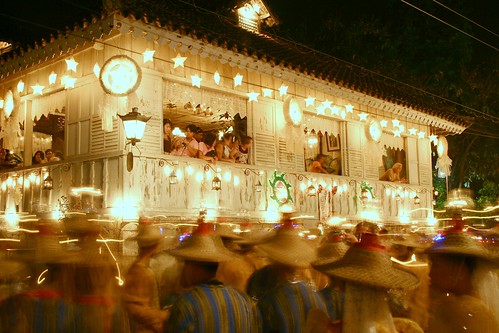
phototip: Conceptualize the image you wanted and experiment.
f/10, 6.0s, 27mm, ISO 100, uncropped
the Festival of Lights, at the Balay na Tisa, the Street of Sta Catalina, Carcar City, Cebu, the Philippines
Acknowledgments: Our deepest thanks to Gibbs and John Enriquez Ada for the invitation, the grand lunch and dinner at the Rayla ancestral house, and the incredible access to the old world that is Carcar. Daghang salamat!






